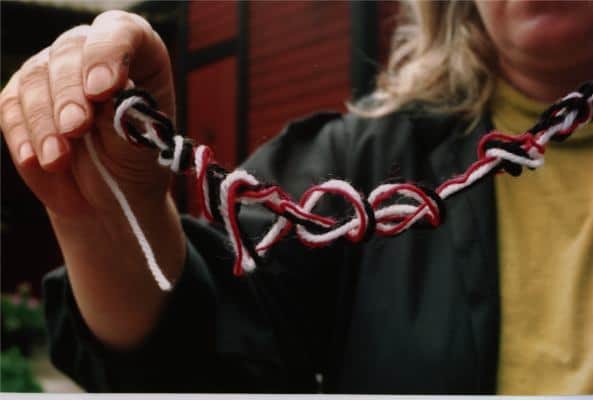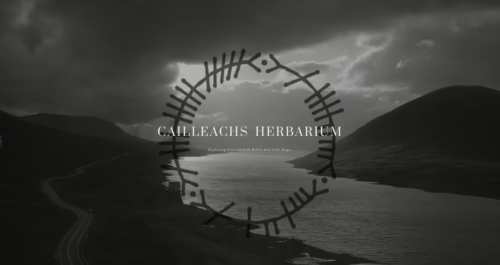The ever-changing colours of the seasons and hue of the year is something that’s always fascinated me. When I lived in cities it was something that didn’t seem so clear. I would catch the greening and browning of trees and the spectacular autumn hues of leaves. A sign of the seasons in itself. Anything subtler was lost on me. Now I can’t imagine missing the colours of the wild hedgerows. Summer starts turning them foamy white, as they are saturated with Hawthorn blossom. The subtle shades of the amazing purples of the Highland Heather in bloom. The dark purple of Blackberry dominating the hedgerow at mid-summer everywhere I turn.
These combinations of colours are one of the signifiers to us and our ancestors the new seasons are upon us. It had me thinking about what signs and colours from nature do I recognise. What is local to me? How does it relate to the broader seasons? What association might if have with the dead, the land and our ancestors?
colours of the seasons – Samhuinn.
Colours: The Autumn hue of leaves, reds, light browns, purples.
The very start of Winter. The leaves are falling from the trees. Many remain but the Cherry trees are the first to turn red and fall. The dark oranges and muted reds are profuse in the forests and edges of the fields as things begin to go dormant. The autumn chill is in the air. The hawthorn has lost most of its leaves. The red Haws punctuate the brown and dark reds of the Dock plants and the reds of the rose hips. All other greenery that may be found tall and straight in the summer months is now a light brown and brittle. The green grass still evident but under a light brown top from dead stalks of summer green. The red berries of the Rowan Tree can still be seen but now it too is without its leaves. There are no longer berries worth eating on the Blackberry bush. The elder berries are all gone along with most of the trees leaves. The sign we have reached Samhuinn. The apples have been harvested. A few remain on the trees. Yet, the dark black of the Sloes of Blackthorn are ideal to gather after a first frost as we slip further into winter.
Colours of the seasons – La Féill Brid.
Colours: Dark Brown, The colour of earth, the very first light green of the new shoots.
This is our midwinter. This is our harsh snow month. Frost and snow can cover much of the ground. Between the snow and frost is the deep dark brown of ploughed earth. Like wrinkles in the palm of an old weary hand. A display of Snowdrops alerts us to La Féill Brid arriving. The early budding of the Elder tree is another coming sign. Accompanied by the wee small shoots of the first flush of tiny nettles and chickweed. Everything else is a tangle of brown shadows. From the different trees. To the brown fields, to the dark of the sea, and the muted tones of lichens hanging from branches and bark.
Colours of the seasons – Bealltainn
Colours: White, Yellow, Blue, Mid-green and the light green of new leaf shoots.
A profusion of growth and arrival of blue colours is a Bealtainn sign. We have already had the white of the blackthorn flowers before the Hawthorn. The blossom of both these trees is a sure sign that Bealtainn is upon us. More May Blossom than the Blackthorn, as folklore attests to. It’s the beginning of summer and the start of profuse flowers and growth. Dandelions are growing their in abundance. Their yellow heads dotting the fields around us. The colour reminding me of fresh churned organic butter.
Colours of the seasons – Lùnastal
Colours: Light red, purple, yellow, golden-yellow, deep dark green,
Midsummer is a purple frenzy. From Rosebay Willow herb to the perfect purple of heather carpets covering the munro’s. Here and there punctuated with the striking yellow of Ragwort and Tansy. The blackberry is in full fruit with its light red to dark purple berries. Hanging in clusters over the dark green leaves. This is a true sign that Lùnsatal is upon us. The Wheat fields are also browning and many are ready to be harvested. The rain is here. Making everything slick with fog and mist. We have very wet summers in Scotland. We were once a temperate rain forest. The land does not forget this. We still a few areas of this native rain forest surviving in remote places. We move into the apple harvest too. After Lùnsatal and the light greens and reds of the apples can be seen poking through the foliage of the trees. When we harvest the first berries and apples. The wheat turning golden. This is a sign Lùnsatal is here.
Plants and folklore linked to the colours of the seasons.
Interesting, we can link the colours of some of the plants and colours of the seasons to the folklore of the year. Plants like Hawthorn, Rowan and Elder play a significant part in the folk history of Scotland. They also follow a certain pattern of colours in the year too. Such as white flowers or buds around Bealtainn. Red or purple fruits around Lùnsatal. These are the plants associated with good (or bad luck) and the Sìdhe in a lot of folk writing and tales. The May bush is adorned at Bealtainn with ribbons across Ireland and Scotland. We don’t have a Maypole so much in Scotland. I ponder if it’s related to these significant farming times and seasonal markers. Perhaps I’m romanticising these connections a bit.
Both Bealtainn and Samhuinn were very significant liminal times in the Scottish Folk calendar. Red and white (Accompanied by black) are very significant colours with the Síth and in the tales of the Aos Sidhe. It was said these are the key colours of those associated with the fairy host. Animals aligned with the Sidhe/Sith have similar colourings. It’s interesting we see these colours at these significant times. At the time of the year most associated with the fairy host? As they move abroad the fields and woods. From mound to mound. As the Aos Sidhe move the people of Scotland would also be moving. Back or too shielings and farming grounds for cattle away from the homestead. It’s interesting the Aos Sidhe do very similar things on the same dates. But this was important work as the season change.
We find the same colours mirrored in the same three different coloured threads in the Snaim. Red, white and black. The three different coloured stones in divination, sometimes used in the Saining Charm. The separation between land, sky and sea, link to the trinity and the magic number three. The significance of the colours found in the Frith augury and the rowan tree and red thread. Which protects us from harm and the malefic power of witches. The same colours are also present in the traditional black books of folk magic from Norway.
I am reaching again, but these colours seem to be a common thread throughout. Not only seen in the folklore but also in nature. Does it link together these themes? Do the colours that we see around us at specific times of year hold a greater meaning?
Perhaps there lies here a speculative framework to link our ancestors, the dead, the land and seasonal signs in nature to certain colours as found in the folk-lore. Could it be the dead change our seasons? We place our offerings. To encourage success at Bealtainn and protection at Samhuinn. Or are they linked to the change – summer to winter – in some way through plants associated with these different influences that I haven’t thought of. I like to imagine the white pathway of our ancestors, a pathway of bones, associated with the white flowers of Bealtainn. The red of the living. The sacrifice this could suggest. Protection emboldened by fresh blood spilt for purpose. The deep scarlet of the Rowan berry and Hawthorn Haw of Samhuinn. The blackness of things hidden. Seeds dark in the earth and stones resting beneath black loch water. The dark of everything between.
Of course, this is all guess work but it’s fun to ponder. How do you develop your own relationships with the world around you?







4 comments
i’ve always been fascinated by the primacy of those three colors around the world, and especially in european folk tradition… red, white, and black are the only colors a newborn baby can see; our folk and fairy tales are filled with those colors; they are forever associated with the fee and with goddesses and used in charms… bright red berries—or spilt blood—stand out against black trees and white snow, as they do against pale and dark sand and stone. some primal memory, definitely…
Yes, red threads seem to be a fixture in Tibetan Buddhism as lucky strings and the Kabbalah for averting the evil eye. The more I look the more I find around the world that these colours are linked to folk memory. The post is speculation in parts but food for thought and thank you for your comments. Most welcome.
As aspects of the triple Goddess the white cord is the Maiden, red cord is the Mother, black cord is the Grandmother/Crone
Thats great that there are modern day practices like Wicca have picked up on something a lot older and have repurposed it for today.